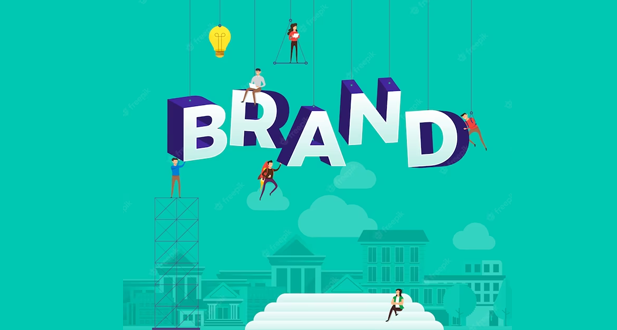How does storytelling build trust?
Storytelling has been used as a tool to convey information and entertain for centuries. However, it is not just a means of passing time or providing entertainment; it is also a powerful tool for building trust. Stories can connect people in ways that facts and figures cannot. When we listen to stories, we become emotionally invested in them, and this emotional investment is what helps to build trust. In this article, we will explore how storytelling builds trust.
First and foremost, stories are memorable. Unlike facts and figures, stories stick in our minds because they are easy to remember. We can recall stories that we heard as children or stories that we heard yesterday. When we remember a story, we are more likely to remember the person who told us that story. This is because stories are a form of personal communication. When we tell stories, we are not just sharing information; we are also sharing a part of ourselves. This personal connection helps to build trust.
Another way that storytelling builds trust is by creating empathy. When we hear a story, we can put ourselves in the shoes of the person telling the story. We can imagine what it must have been like to be in their situation, and this creates empathy. Empathy is essential for building trust because it helps us to understand other people’s perspectives. When we understand someone else’s perspective, we are more likely to trust them.
In addition to creating empathy, storytelling also creates a sense of community. When we hear a story, we feel connected to the person telling the story and to the other people who are listening. We become part of a shared experience, and this shared experience creates a sense of community. This sense of community is important for building trust because it helps us to feel like we are part of something bigger than ourselves.
Furthermore, storytelling builds trust by creating an emotional connection. When we hear a story, we become emotionally invested in it. We feel happy when the story has a happy ending, and we feel sad when the story has a sad ending. This emotional connection is important for building trust because it helps us to feel like we are connected to the person telling the story. We are more likely to trust someone when we feel emotionally connected to them.
Finally, storytelling builds trust by creating a sense of authenticity. When we hear a story, we are more likely to believe it because it feels authentic. Stories are often told in a conversational tone, and this conversational tone makes the story feel like it is coming from a real person. This sense of authenticity is important for building trust because it helps us to feel like the person telling the story is genuine.
Storytelling is a powerful tool for building trust. It creates a personal connection, empathy, a sense of community, an emotional connection, and a sense of authenticity. When we hear a story, we become emotionally invested in it, and this emotional investment is what helps to build trust. So, the next time you want to build trust with someone, try telling them a story. You might be surprised at how effective it can be.
The role of brand storytelling in building trust
In today’s highly competitive business world, brands are constantly seeking ways to differentiate themselves and build trust with their target audience. One way that many companies have found success in this endeavor is through brand storytelling. By crafting a compelling narrative around their brand and products, companies can not only capture the attention of potential customers but also establish themselves as trustworthy and reliable sources in the minds of consumers.
The role of brand storytelling in building trust is multifaceted. Firstly, it allows companies to showcase their values and beliefs, giving consumers insight into the company’s motivations and guiding principles. This transparency can be especially important for businesses operating in industries where trust is crucial, such as healthcare or finance. By sharing their stories and demonstrating their commitment to ethical practices, companies can establish themselves as trustworthy partners and earn the trust of their customers.
Another way brand storytelling builds trust is by creating an emotional connection between the brand and the consumer. Humans are wired to respond to stories – they engage our emotions and help us connect with others on a deeper level. When a company tells a story that resonates with their target audience, it can create a sense of shared experience and common values. This connection can then translate into brand loyalty and trust, as customers feel that the company understands and cares about their needs and interests.
Moreover, brand storytelling can also help to humanize a brand. In an era where social media and online interactions have become ubiquitous, it’s easy for companies to come across as faceless entities rather than real people. By sharing stories about the people behind the brand – whether it’s the founder, employees, or customers – companies can inject a sense of humanity and personality into their brand, making it easier for customers to relate to and trust.
A prime example of a brand that has successfully leveraged storytelling to build trust is TOMS Shoes. Since its inception in 2006, TOMS has positioned itself as a socially responsible company that’s committed to making a difference in the world. The company’s “One for One” model, where for every pair of shoes purchased, another pair is donated to a child in need, has become synonymous with the brand.
TOMS has also been very open about its charitable efforts, regularly sharing stories and updates on the impact it’s making through its various programs. By doing so, TOMS has not only differentiated itself from other shoe brands but also established itself as a brand that cares about more than just profit – a move that has earned the trust and loyalty of its customers.
However, effective brand storytelling is not just about creating a good narrative – it also requires a deep understanding of the target audience. In order to resonate with consumers, brands need to know what their customers care about, what motivates them, and what stories will capture their attention. This requires research and data analysis to truly understand the needs and desires of the target audience.
Moreover, brands need to ensure that their storytelling aligns with their overall brand strategy and messaging. A great story won’t be effective if it contradicts or undermines the core values and beliefs of the brand. This requires a clear understanding of the brand’s identity and what it stands for, as well as a willingness to be consistent and authentic in all messaging.
Finally, it’s important to note that brand storytelling is not a one-time effort – it’s an ongoing process that requires continual attention and adaptation. As a company grows and evolves, so too must its storytelling. This means staying attuned to changes in the market and the needs of the target audience, as well as being willing to experiment with new storytelling approaches and techniques.
Benefits of brand storytelling
Brand storytelling is the art of conveying a brand’s message in a way that resonates with its target audience. It is a powerful marketing tool that can help businesses build a connection with their customers, differentiate themselves from competitors, and ultimately, drive sales. In today’s crowded marketplace, where consumers are bombarded with advertising messages on a daily basis, storytelling can be the key to cutting through the noise and capturing their attention.
One of the primary benefits of brand storytelling is that it helps to build a sense of trust and loyalty with customers. By sharing a brand’s story, businesses can create an emotional connection with their audience that goes beyond the functional benefits of their products or services. Consumers are more likely to identify with a brand that they feel shares their values and beliefs, and storytelling can help to communicate these aspects of a brand’s identity.
In addition to building trust and loyalty, brand storytelling can also help businesses differentiate themselves from competitors. When products or services are similar, it can be difficult to stand out in a crowded market. However, a compelling brand story can help to set a business apart by highlighting its unique history, values, and mission. By emphasizing what makes a brand special, storytelling can help to create a distinct identity that customers will remember and choose over other options.
Another benefit of brand storytelling is that it can be used to educate customers about a brand’s offerings. By weaving product or service information into a narrative, businesses can help customers understand how their offerings can solve their problems or meet their needs. This is especially important in industries where products or services are complex or require a high level of technical knowledge. By breaking down information into a relatable story, businesses can make it easier for customers to understand and engage with their offerings.
Storytelling can also be used to humanize a brand and create a more personal connection with customers. In today’s digital age, where many interactions take place online or through social media, it can be easy for businesses to come across as faceless corporations. However, by sharing stories about the people behind the brand, businesses can create a more human image and show customers that there are real people working to provide them with products or services. This can help to create a sense of empathy and understanding, which can in turn foster stronger relationships with customers.
Finally, brand storytelling can be an effective way to inspire action among customers. By creating a sense of urgency or excitement around a brand’s message, businesses can motivate customers to take action, whether that be making a purchase, sharing their story with others, or supporting a cause that the brand cares about. This can help to drive sales and increase brand awareness, as customers become more engaged and invested in a brand’s story.
There are many benefits to brand storytelling, from building trust and loyalty to differentiating a brand from competitors, educating customers, humanizing a brand, and inspiring action. By using storytelling as a strategic tool in their marketing efforts, businesses can create a powerful emotional connection with their audience that can help to drive growth and success over the long term.
Conclusion
In conclusion, the role of brand storytelling in building trust is significant. By sharing their stories, companies can establish themselves as trustworthy partners, create emotional connections with consumers, and humanize their brand.
Frequently Asked Questions
Brand storytelling helps build trust by creating an emotional connection with the target audience. When consumers feel connected to a brand, they are more likely to trust it. Additionally, a well-crafted brand story can communicate a brand’s values and mission, which can also contribute to building trust.
Brand storytelling creates an emotional connection by using narrative elements such as characters, conflict, and resolution. These elements help consumers relate to the brand on a deeper level and feel a sense of empathy and connection with it.
A successful brand story should have a clear message, a relatable protagonist, a strong conflict, and a resolution that aligns with the brand’s values and mission. It should also be authentic, unique, and memorable.
One example is Nike’s “Just Do It” campaign, which uses storytelling to inspire and empower athletes. Another example is Apple’s brand story, which communicates its values of simplicity, design, and innovation.
Brands can use storytelling to differentiate themselves by creating a unique and authentic story that resonates with their target audience. By telling a story that is different from their competitors, brands can set themselves apart and create a distinctive brand identity.





